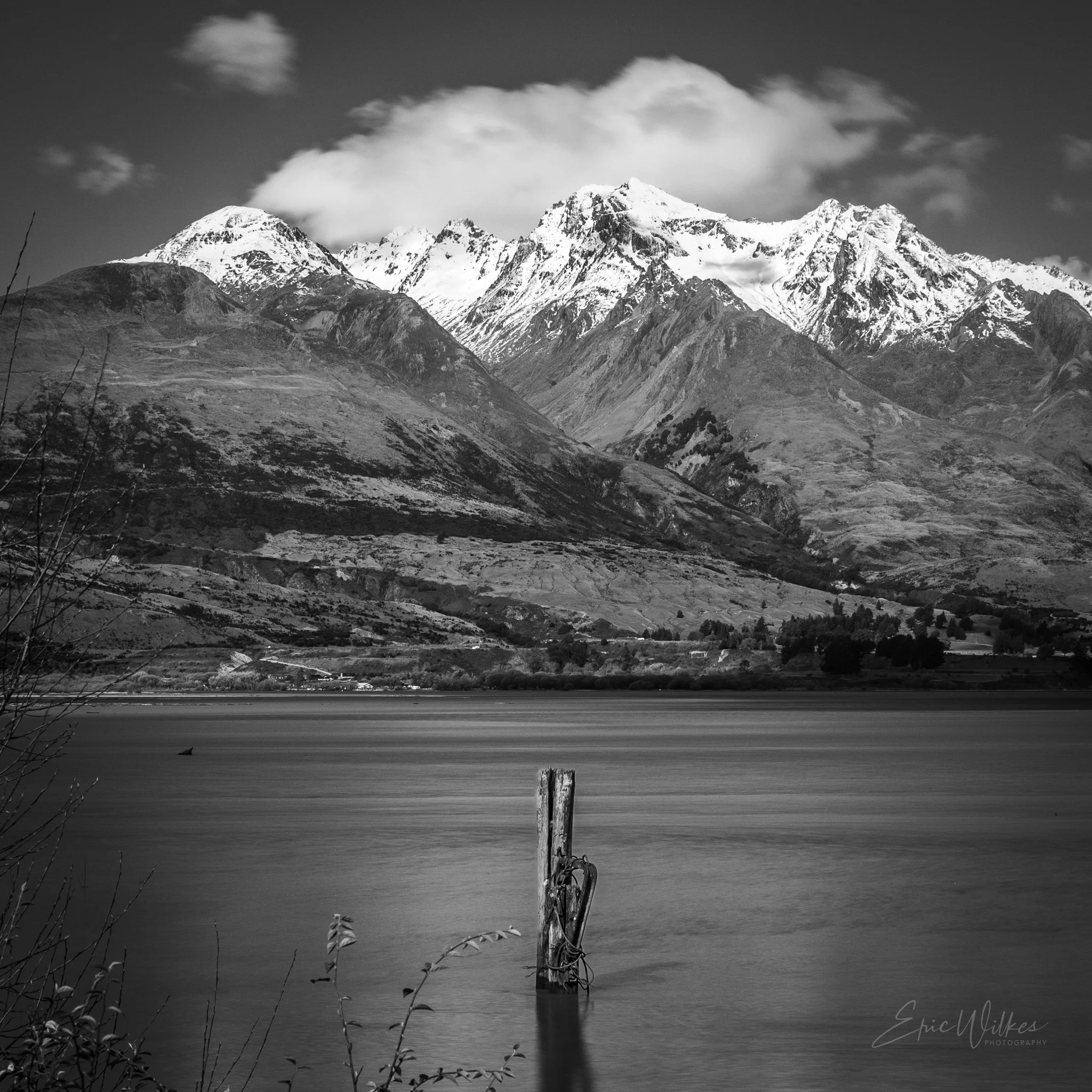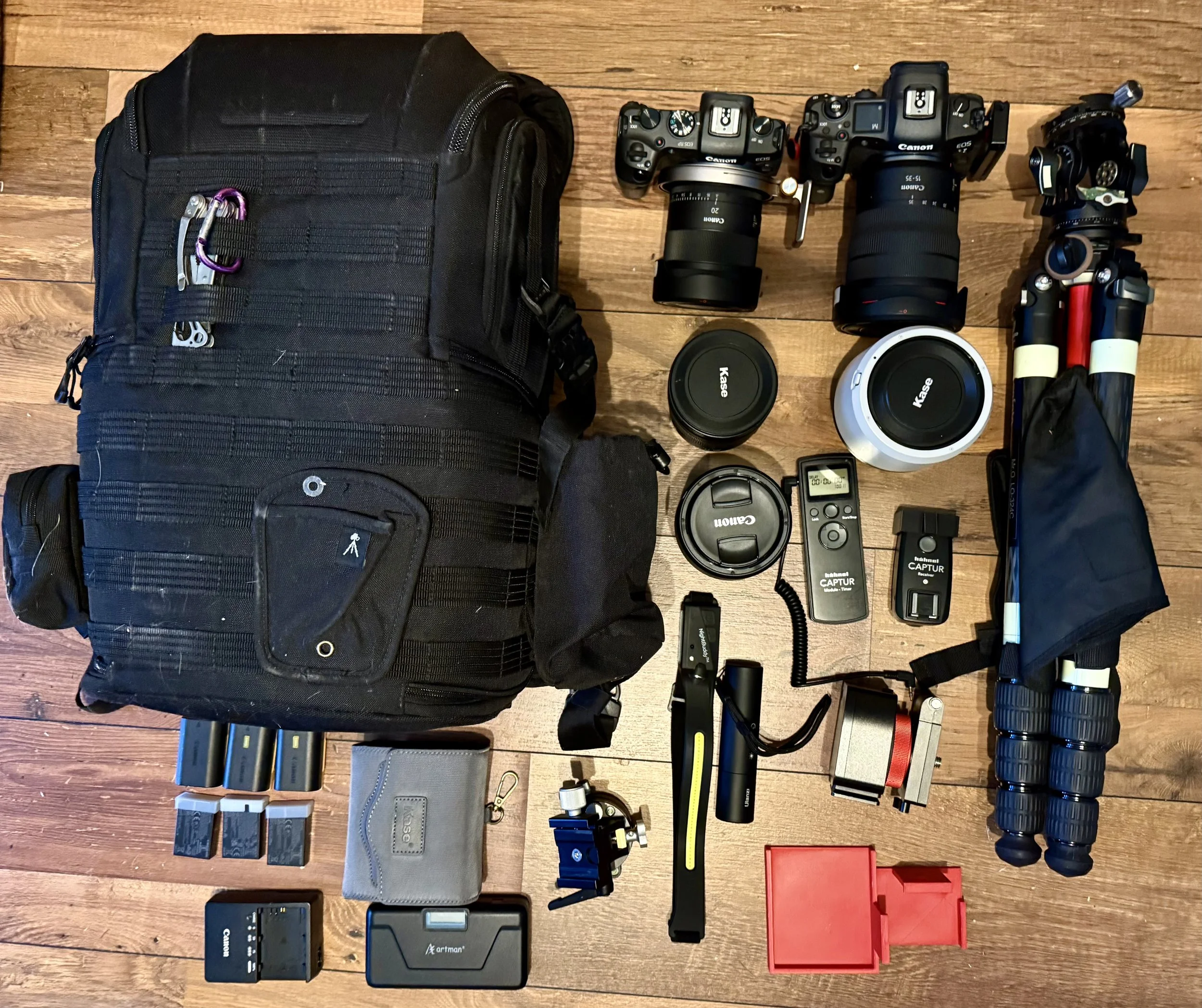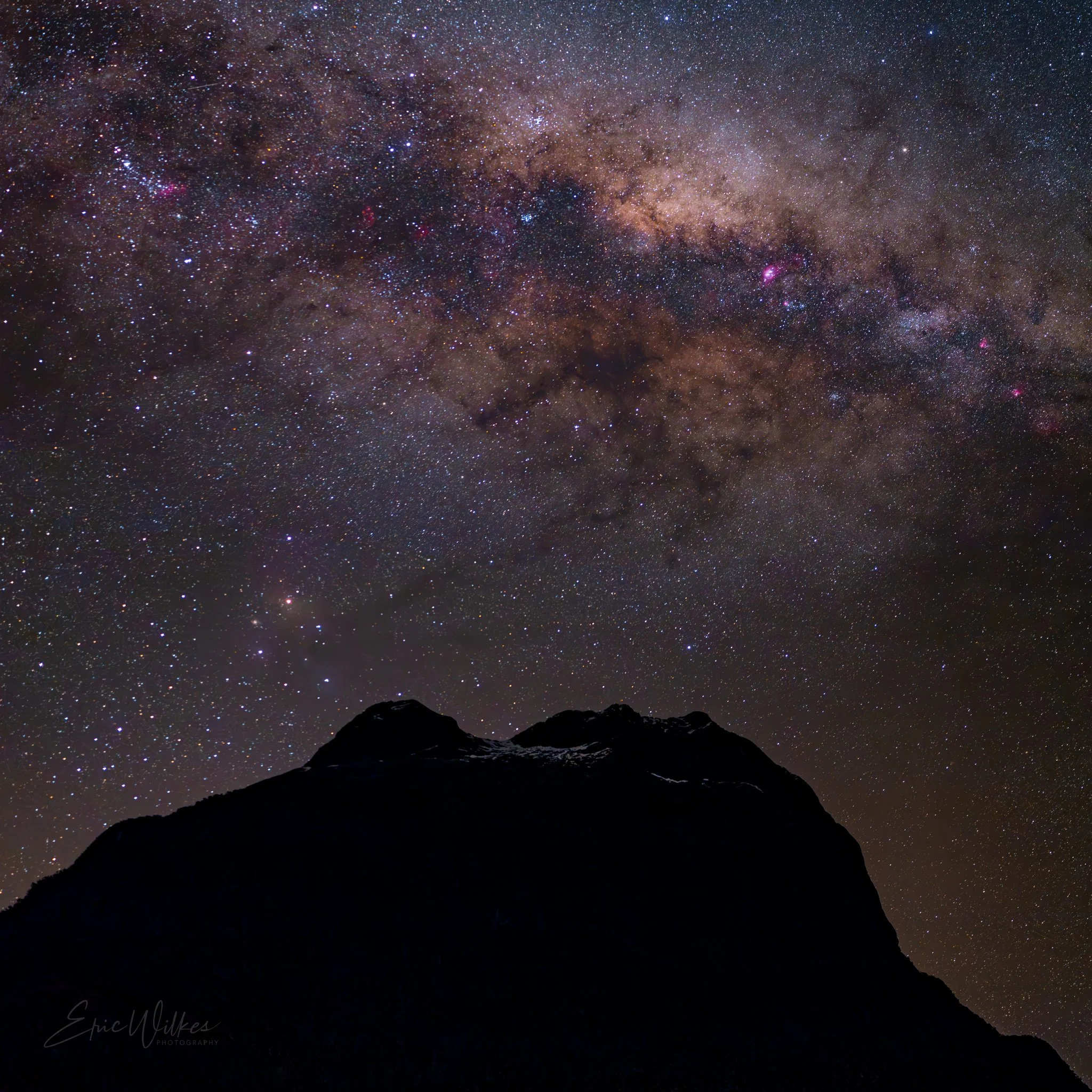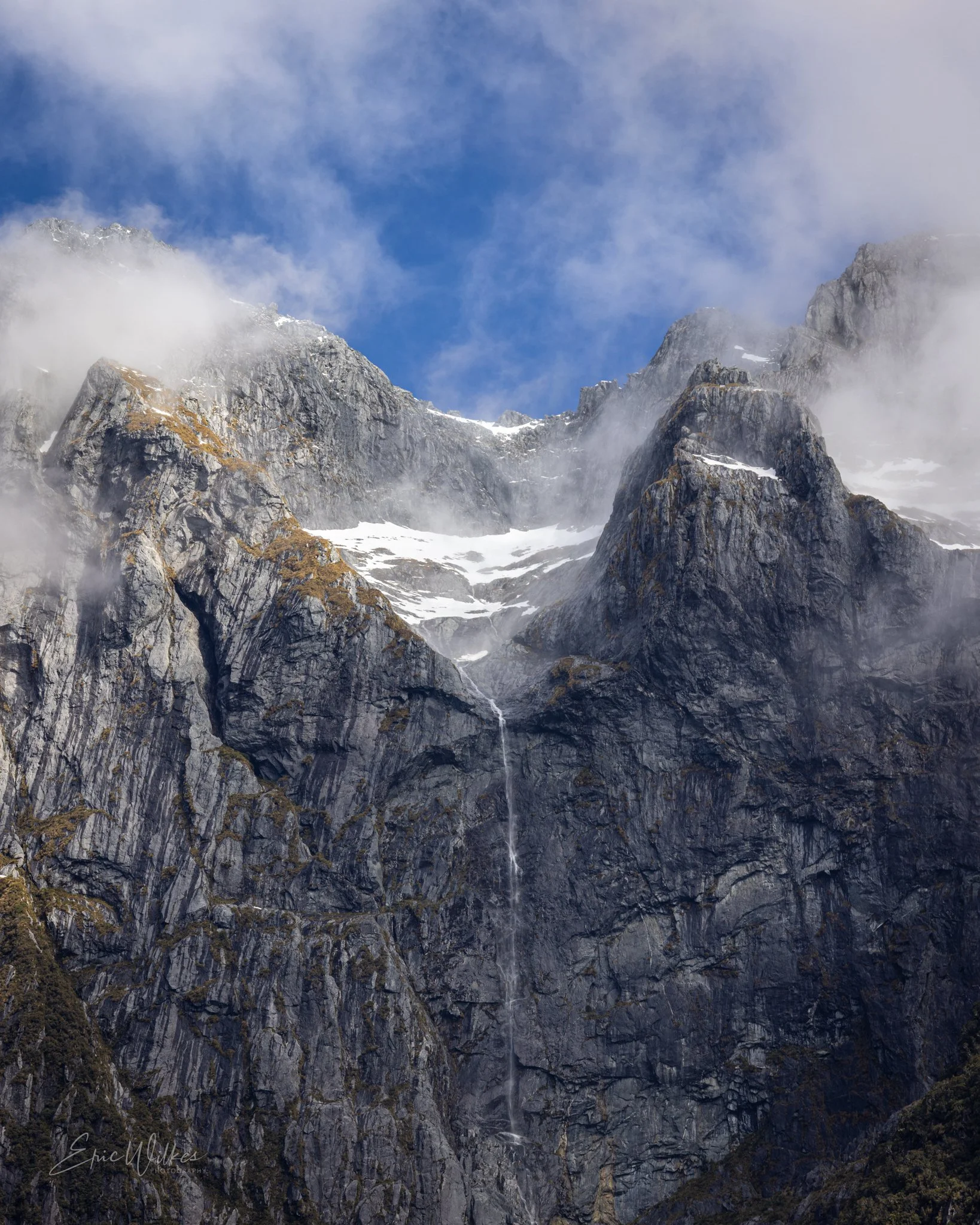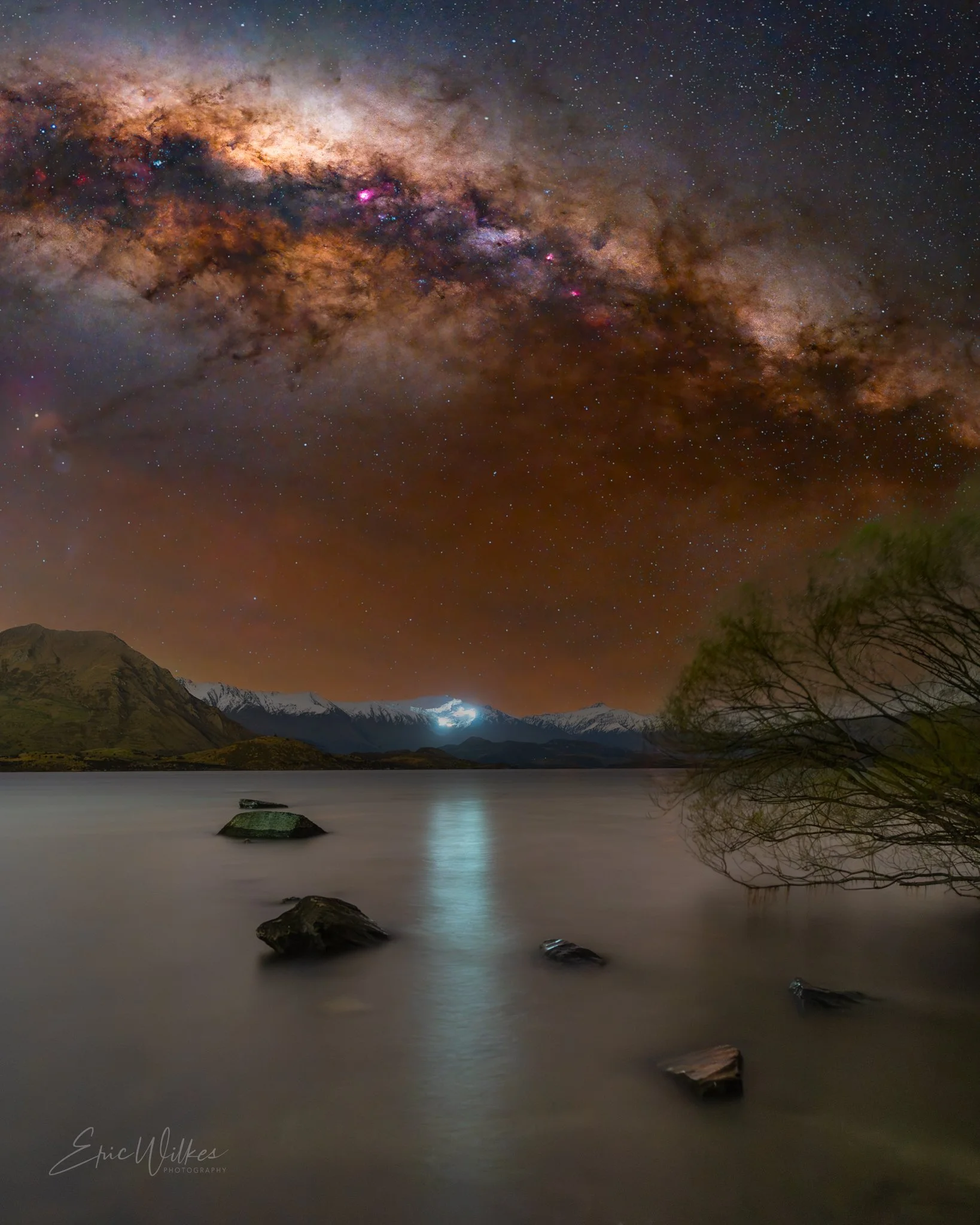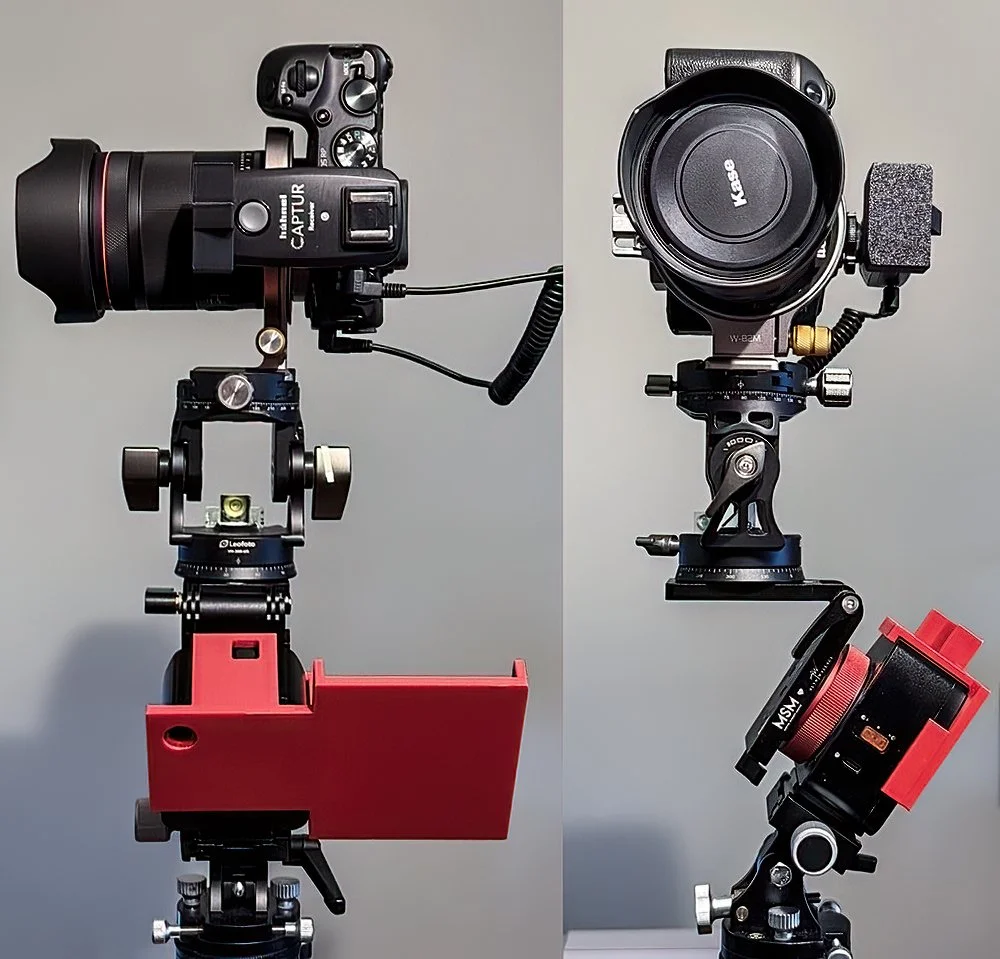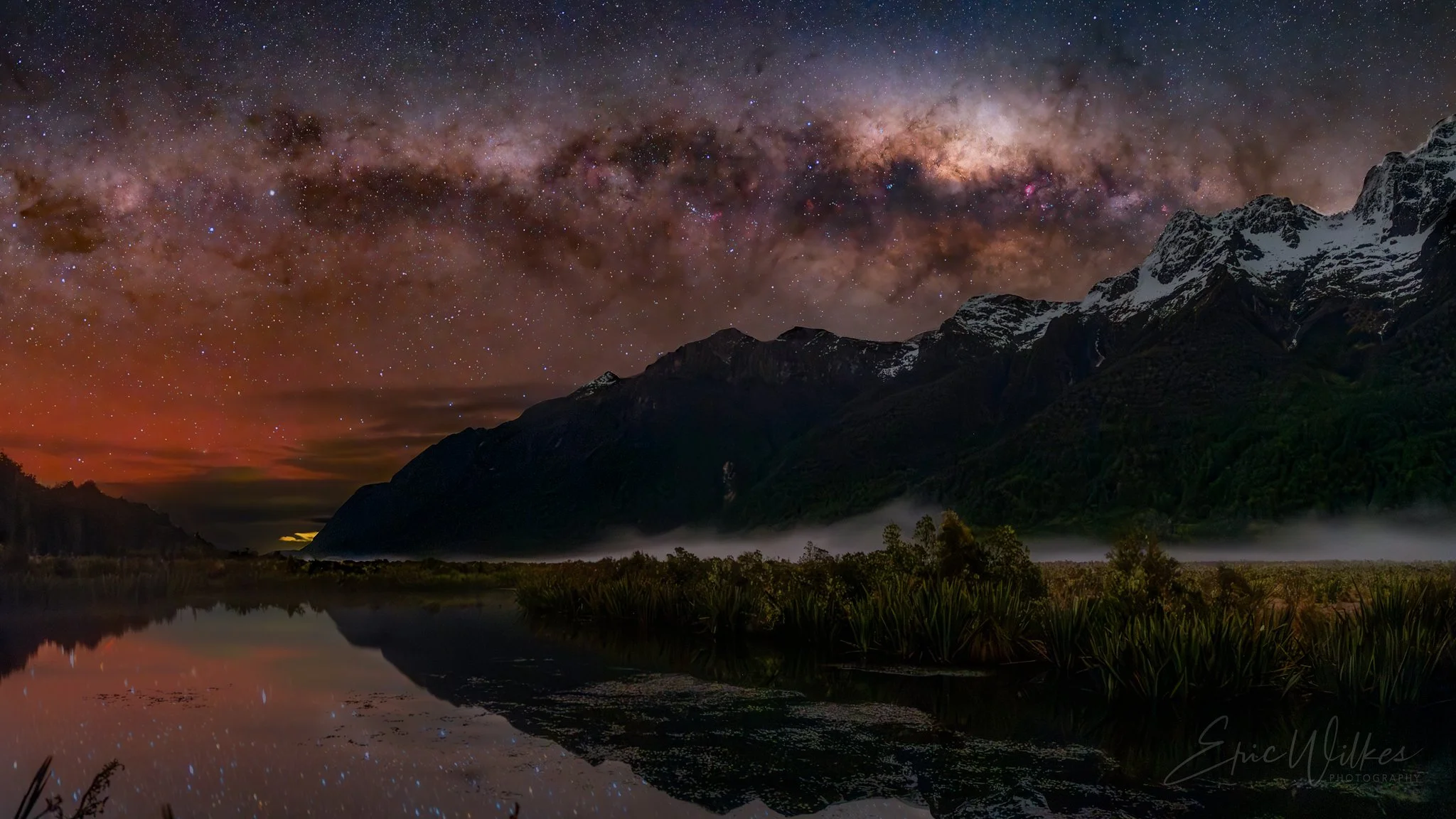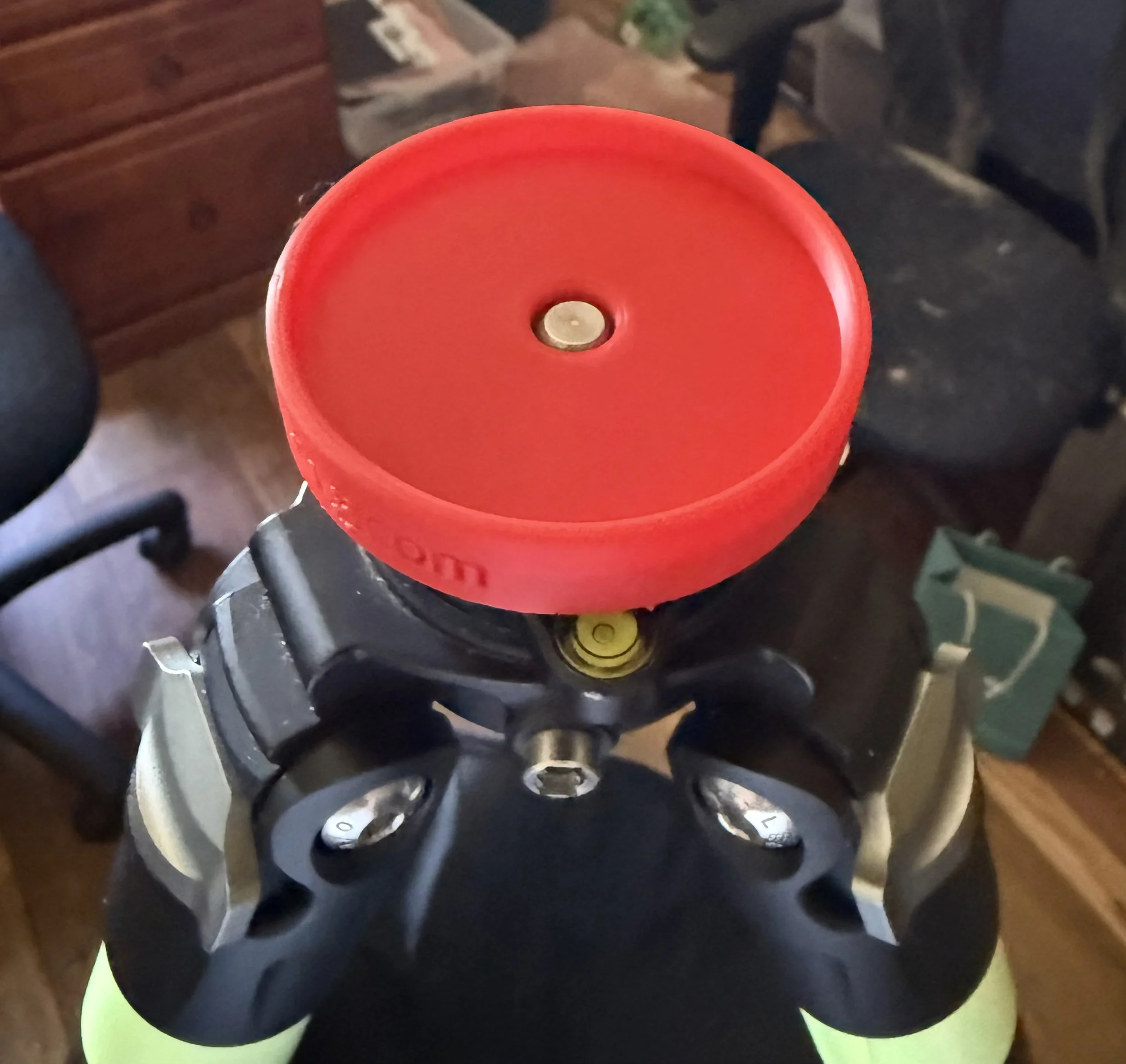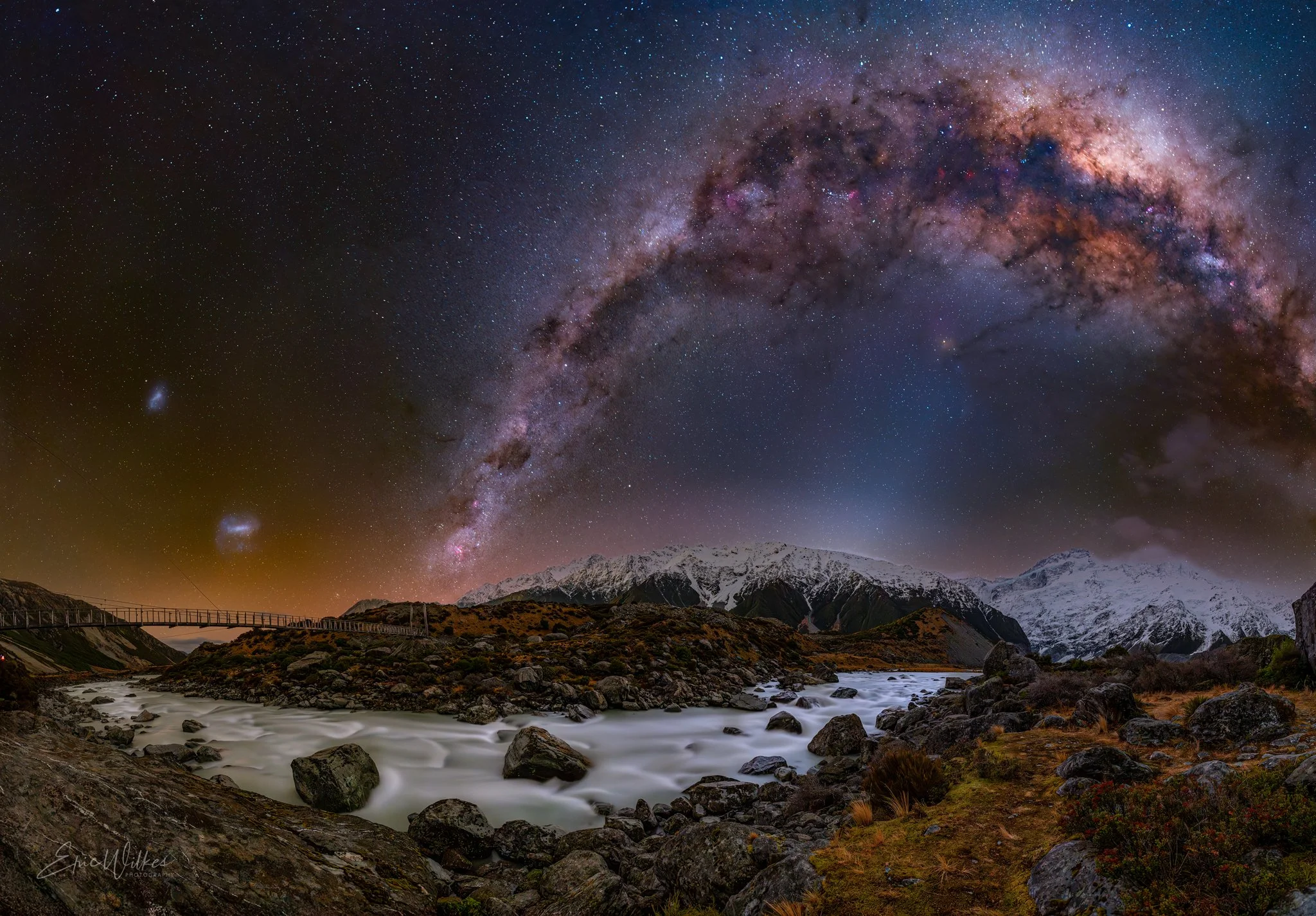Picking gear for a NZ photo tour, what worked and what didn’t
I did actually take some photos in the daylight as well…..
I recently did a photo tour of the South Island of NZ with Rare View Tours led by Levin Barret and Richard Tatti. Before the you ask, the tour was brilliant and I cannot recommend it highly enough. This was, however, only my second OS trip with a significant amount of camera gear and the first time with an astro-landscape focus. Levin Barret gave some great advice on what to bring and how to keep the carryon luggage under the mandatory 7kg (I failed, but luckily it was not tested anywhere). I thought it may be interesting to review what I took and more importantly, what was useful and what was not.
Moke lake near Queenstown.
The quick rundown of gear I took along is below.
Canon R5 (for the daylight landscape work)
Canon RP astro mod (obviously for the night-scape work)
Canon RF 15-35 F2.8L
Canon RF 70-200 F4L
Canon RF 24-105 F4L
Canon RF 50 F1.4L VCM
Canon RF 20 F1.4L VCM
Laowa RF 12mm F2.8 FFII
Kase magnetic filters (CPL,ND1000, ND64, ND8, Blackmist1/2)
MSM Nomad Tracker
MSM Wedge (2nd gen)
Newer rotation plate
MSM Alyn Wallace V-plate
Eric Wilkes 3d printed phone mount for Nomad
Leophoto VH-30R-US tripod Head
Leofoto MrO LO-324C tripod
Hahnel Capture Remote trigger/intervalometer
NightBuddy headlamp
Ulanzi LM07 bi-colour torch
Camera bag, LowPro ProTactic BP450 AWII
Canon charger for LPE6 batteries
Artman dual charger forLP-E17 batteries
4 x LP-E6 batteries
5 x LP-E17 batteries
Lots of SD Cards
Apple 13’ M4 MacBook Air
1TB potable SSD USB-C drive
Katmandu fleece gloves with phone compatible finger tips
Vallerret photography gloves
This is me travelling light! Missing from the photo is the Laowa 12mm (I forgot to put it in the photo), the MacBook Air and all the charging cables and SD cards.
So yeah, I took to much gear…. But perhaps surprisingly I used almost all of it. So what worked and what didn’t?
Camera Bodies
Both the cameras worked flawlessly for the whole trip.
The R5 was brilliant in the massive landscapes of NZ. As per usual I mostly operated in manual mode and found I had to be la little careful in environments with lots of snow to not overexpose, but I just could not have been happier with it. Like everyone else using the original R5 I have been wondering should I upgrade to the mark II version, but this trip just reinforced that I don’t need or use the options available on the new model for my sort of work, and the Mk I probably has better low light performance which is more important to me.
The Church of The Good Shepard, Canon R5, RF15-35 F2.8L, 17mm, ISO 100, f/9.0, 1/60 sec
The RP astro mod just continues to surprise. It was a toss up weather to take it or the Cannon Ra, but the lighter weight won out. This little (and somewhat dated now) camera performs incredibly well after being astro modified. Its sensor is a little noisier than some more modern cameras such as the R8 and R6II, but given I am usually tracking to get more light and using fast lenses it never seems to be an issue. If you have an original RP gathering dust consider getting it astro modified, you won’t regret it.
Milford Sound, Canon RP (astro-modified), RF50mm F1.4 VCM, ISO3200, f/2.0, 10 second, 2 shot vertical pano
Lenses
Here I very much went against the advice of our guide Levin who suggest just having 2 or 3 lenses, I bought along 6! That being said I used everyone of them except, perhaps surprisingly, the 12mm.
I found the that for the daytime landscapes my normal walk around zooms of the 15-35 and 24-105 gave me the flexibility to quickly compose on the fly as we went from location to location. The extra reach of 70-200 came in handy to isolate specific details of landscapes or get some of the wildlife shots (sheep are wildlife aren’t they?). I was really glad that I had all 3 and would definite take them again.
Using the reach of the 70-200 to pick pit some detail in the landscape, Milford Sound. Canon R5, RF70-200 F4L, 176mm, ISO100, f/9.0, 1/200 sec
For the night shots the 20mm tended to be my go to lens, and it did work brilliantly. No regret moving to this lens from the Sigma 20 I recently sold. I am increasingly drawn to using the 40 and 50mm lenses for my astro landscapes as I love the extra compression it gives between the foreground subject and the sky. The 50 was a little harder to use on this trip because working with a large group of (there were 13 of us) there is not as much freedom to move around to get the best composition without getting into everyone else’s shots. But the lens did work brilliantly when I used it and definitely was glad I had it with me. I simply didn’t ever feel the need to pull out the 12 mm, perhaps because I am not really familiar with it yet and I didn’t want to faff around while I was in a big group to make it work. It could have stayed at home.
Lake Wanaka, Canon RP(astro-mod), RF20mm F1.4 VCM Sky ISO 800, f/2.0, 60 seconds, tracked with MSM Nomad, Foreground ISO 1600, F/2.0, 60 sec
Star tracker and accessories
My astro set up.
The Nomad tracker, very glad I had it along (only Levin and I had trackers on the trip I believe) and I used it at 3 of the 7 locations I shot. In every instance I could set it up and polar align using my phone in a couple of minutes and it worked brilliantly to get colour depth and details in the shots. Combining it with an astro modded camera really gives an extra punch to shots. It is incredibly light and it, the wedge and the phone bracket take very little bag space. It really is the ideal option for travelling and hiking.
The other four locations where I did not use it were mostly about the time we had (as clouds were rushing in or the core was setting) and the space once again when we were all crowded into a smallish location. The other deciding factor was clouds, long tracked exposures can work with clouds, but not when you are stitching panoramas as they just really don’t come together in my experience and going old school with high iso, fast aperture and shortish exposures (10 seconds or less) gave great results.
Mirror lakes in Fiordland National Park, Canon RP(astro-mod), RF20mm F1.4 VCM Sky ISO 3200, f/2.0, 10seconds, 3 shot pano. foreground ISO 3200, f/2.0, 60 sec, 3 shot pan pano
One thing that did not work quite as I wanted it in my night shots was my Hahnel remote trigger. It turns out someone else had one on the trip as well and when I was shooting near Mount Cook suddenly everything seem to go crazy. After a few minutes of blind panic (since this was one of my bucket list shots and conditions were essentially perfect) I realised it must be interference from someone else’s trigger. All it meant was I had to wire the trigger directly to the camera which was fine, just not as convenient. Have since invested in a similar remote intervalometer shich can change channels.
The Leofoto pano head was a great choice and I was really glad I chose it over a ball head. It makes composing and moving for multi-shot panos just that much easier and reliable, either directly on the tripod or mounted on the v-plate on the tracker. I don’t think I will go back to using a ball head again if I can avoid it. It would be great to get the Acratec version which is lower profile and better made, but $900 is a lot of money.
The leofoto tripod was pretty a pretty perfect combination of compact size and sturdiness. It is just about perfect height for me when combined with a wedge, tracker, v-plate and pano head. It has a built in levelling base, I simply won’t use a tripod that doesn’t have one anymore, they are game changer for setting up and getting everything right from the beginning.
The one issue I did run into was, however, using this levelling feature in the dark. When you are doing an astro shoot by yourself you just turn on your headlamp and use the built in level (I have glued a small prism to mine so I can see it from horizontal position). However, when you are with a group of people turning on a headlamp is highly likely to ruin someone else’s shot. I found myself wanting to change locations a couple of times once I had finished my first set of images only to realise that most people were still shooting and so I had to essentially just guess level and hope. Sadly I already have the solution but didn’t take it with me. I 3d printed a little disk with a hole in it (for the bolt in the tripod that the head attaches to) that could sit on the top of tripod without the head that allows you to put your phone on top of of it to use as a level. Hindsight is a wonderful thing.
That takes me onto what was probably my biggest gear mistake of the trip, my head torch. I use one with a broad 10cm flexible LED strip that can light up in red or white light. It is absolutely brilliant for walking as it gives a broad light that lights up the ground around you really well and make walking, at least for me, much safer. However when you are around other people it is totally useless. It lights up an very wide area quite brightly on even its lowest setting and you can’t angle it down directly at your feet as you can with some other head torches so it either blinds anyone your trying to talk to, or leads to heaps of issues with lighting up others foregrounds in unpredictable ways. I ended up feeling incredibly guilty any time I had to use it and avoided it whenever I could leading to other obvious issues in the dark. Have already purchased a different kind of head torch, but I think the search for the perfect one will go on.
A great head torch, but definitely not good when you are in a group.
My other hand torch was fine, it is perfect for light painting and I can really recommend it. I just didn’t get a chance to light paint any foregrounds on this trip due to the circumstances and working in a big group.
The other stuff…
Gloves, they are so important in this kind of low temperature environment (it did snow one night just after we left a location, a novel experience for a boy from Aus). Both sets of gloves worked well, but even with the finger pads for touch screens I found myself taking off the fleece gloves to change settings etc. However at the shoot near the swing bridge on the Hooker track I lost one of my gloves (I did eventually find it) and couldn’t believe how painful it quickly became. Seriously a lesson learned to clip your gloves to your sleeves so that if you take them off they don’t disappear. The Vallerret gloves which you can fold back the forefinger and thumb tips so you can use them to operate the camera were brilliant, but perhaps overkill for (most) of the conditions we were in.
Hooker Track, NZ, Canon RP(astro-mod), RF20mm F1.4 VCM Sky ISO 800, f/2.0, 30 seconds, 7 x 2 pano, tracked with MSM Nomad, Foreground ISO 3200, F/40, 120 sec 7x1 pano.
I took essentially every battery I owned (one downside of the two bodies I chose were they use different batteries) but essentially, didn’t need them. Even in the cold conditions I rarely went through a whole charge in either camera on a given shoot (particularly as I would use one body through the day and one at night) and there was plenty of opportunity to charge them while I slept in the hotels (yes we did actually get to sleep each night). While it may be different if going to more remote locations or actually camping I probably could have got away with one spare battery for each camera and saved on the weight (I carried them in my pockets on the plane so that they did not add to my already overweight camera bag). Similarly with the SD cards, downloading them each evening to my computer to back them up was good, but I did not realistically come close to filling the primary ones in the camera and so did not need the spares I took.
The LowPro bag was fine for the trip and did a great job. It is really great for holding my gear and is very comfortable. I think my only gripe is that it is not great for holding non camera stuff like jackets, drinks and food for hikes. You can strap stuff and pouches to the molex straps, but I think that something a bit more flexible would be good.
One final comment on packing for planes. To get what I had even close to the 7 kg I had to pack essentially everything that was not a lens or body into my checked luggage (tripods, tripod heads, brackets, wedge, filters, chargers etc) or into my jacket pockets (batteries and the Nomad). I have found it is very helpful going through security to have a jacket or vest with lots of pockets that you can simply slip off at security and put through the scanner without having empty all your other pockets.
So all in all, apart from the head torch, remote trigger and one lens I was really happy with all the gear I took and probably would change what I did by very much.
